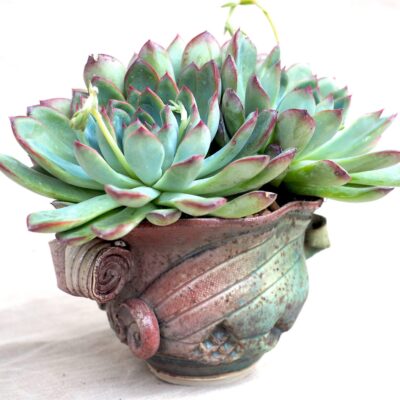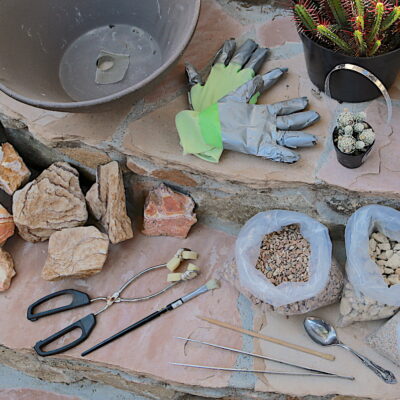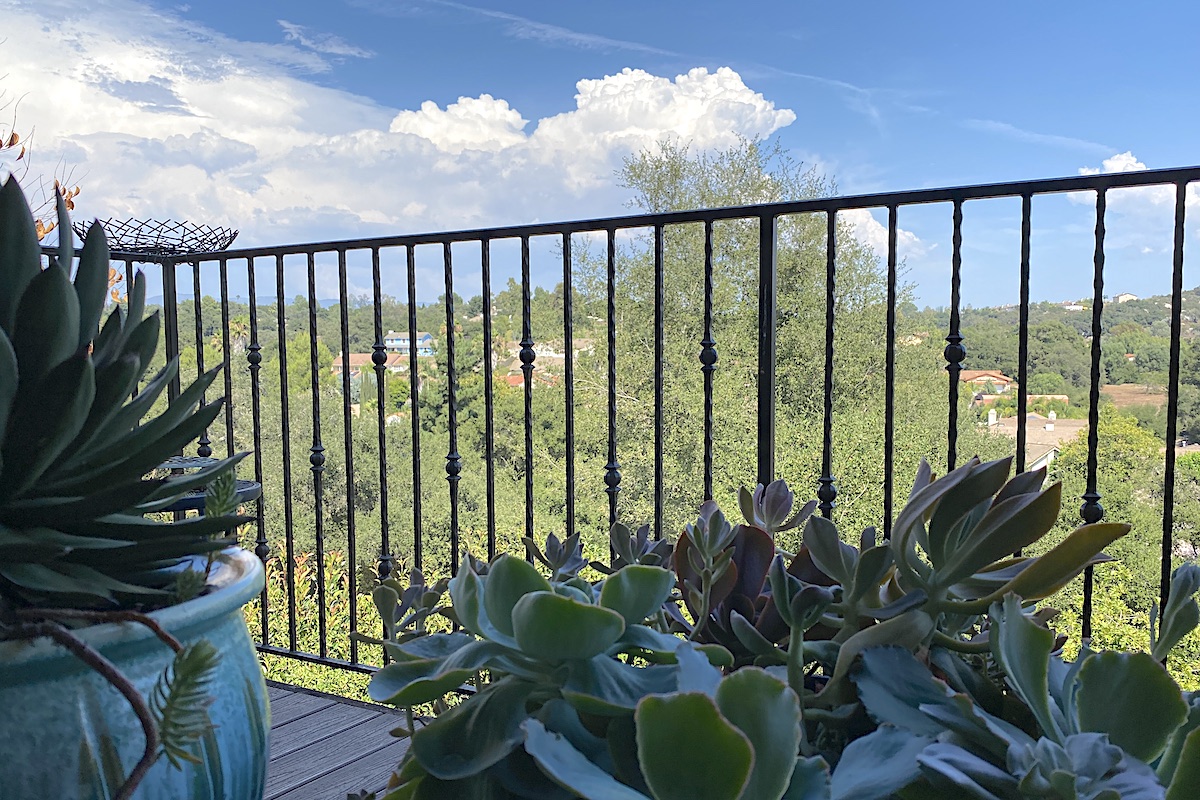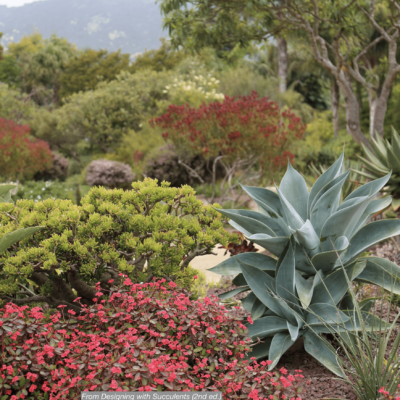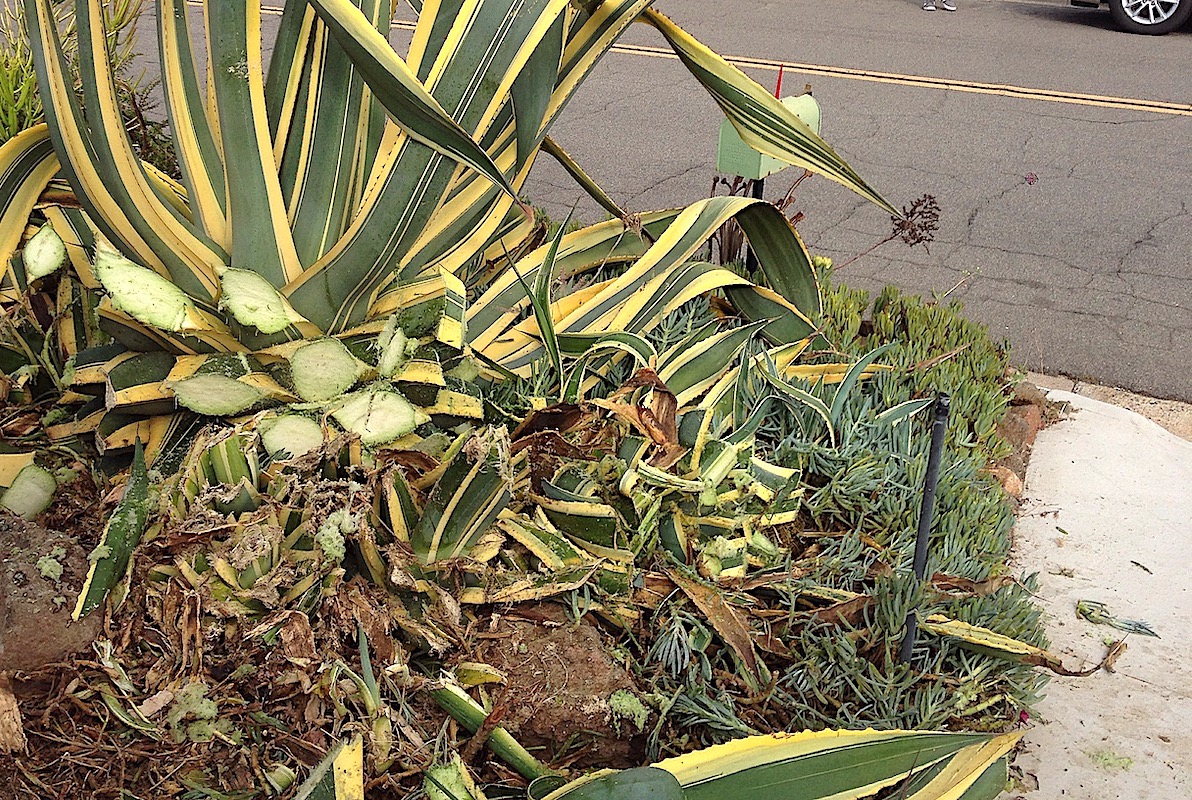My idea for my latest YouTube video was to show you how to use tweezers and kitchen tongs to repot a spiny succulent without touching it. For my overgrown corn-cob euphorbia, I picked an art pot with the perfect size, color and pattern. But after I tried unsuccessfully to slide the spiky succulent out of its old pot, I discovered (yikes!) it was firmly stuck.
How to extract it without harming it...or myself? Well! What a great opportunity to show you how to repot a stuck spiny succulent---a tricky, not uncommon problem. (Btw, in the video it sounds like I'm damaging my table, but it's fine.)
How to repot a stuck spiny succulent: Video stills
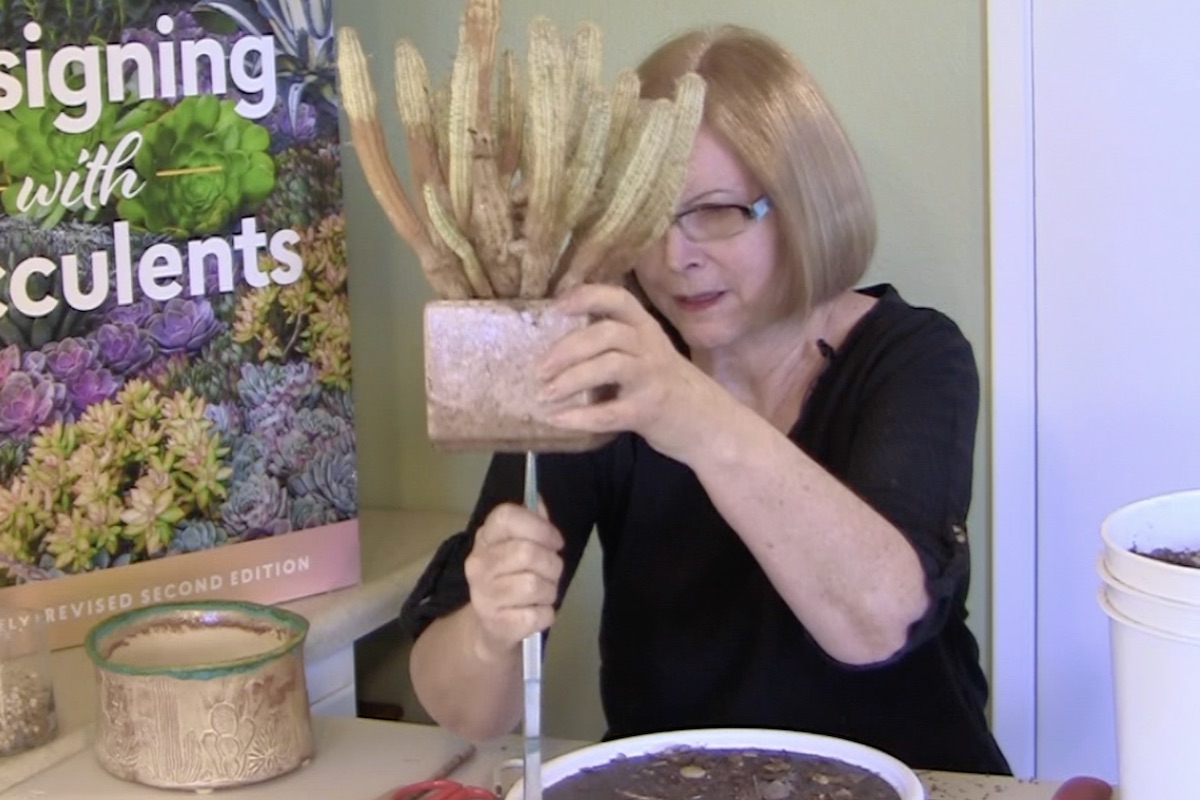
I try to push the root ball upward through the hole in the bottom of the pot
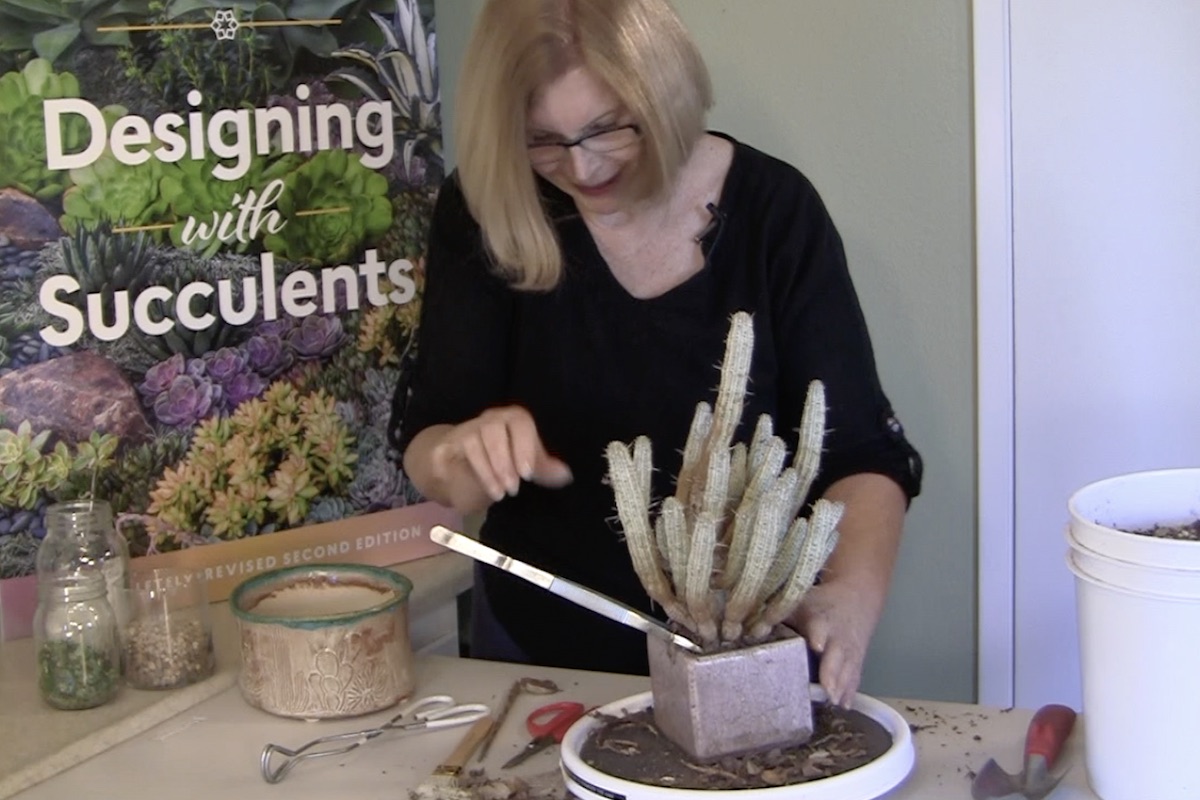
I use my long-handle tweezers as a lever
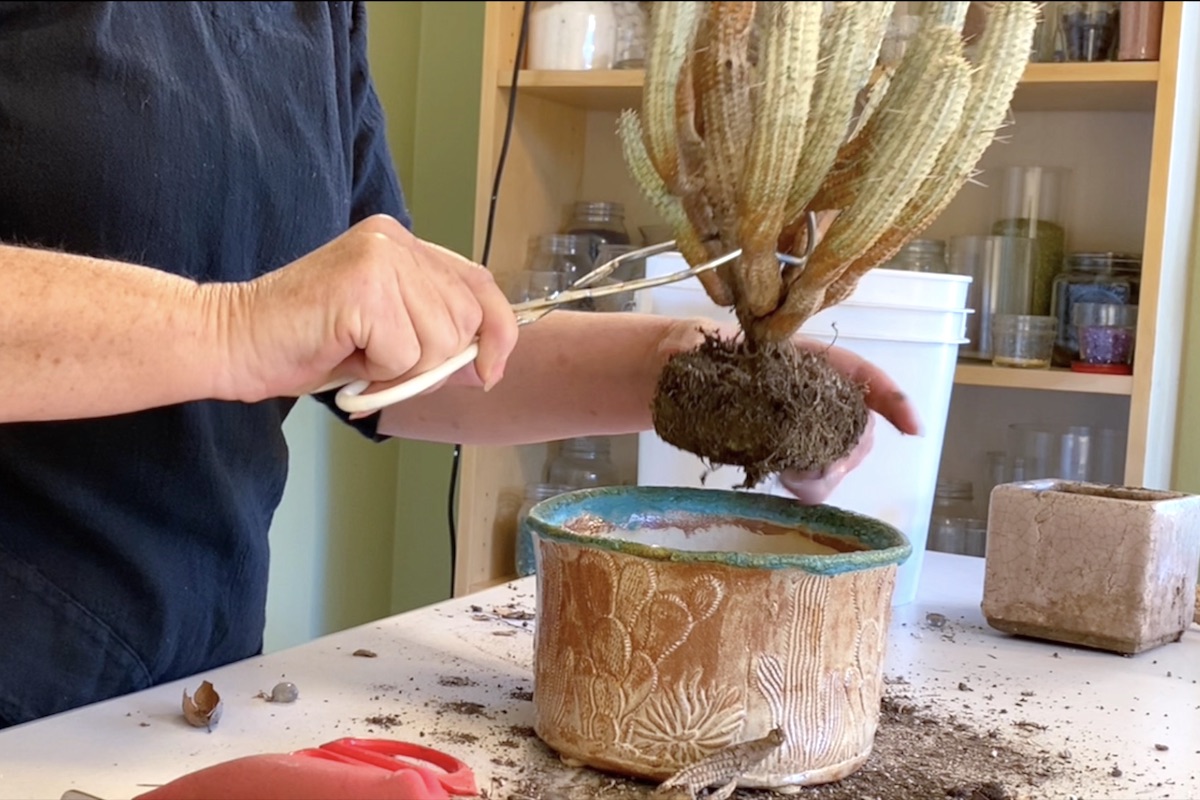
I hold the root ball with kitchen tongs.
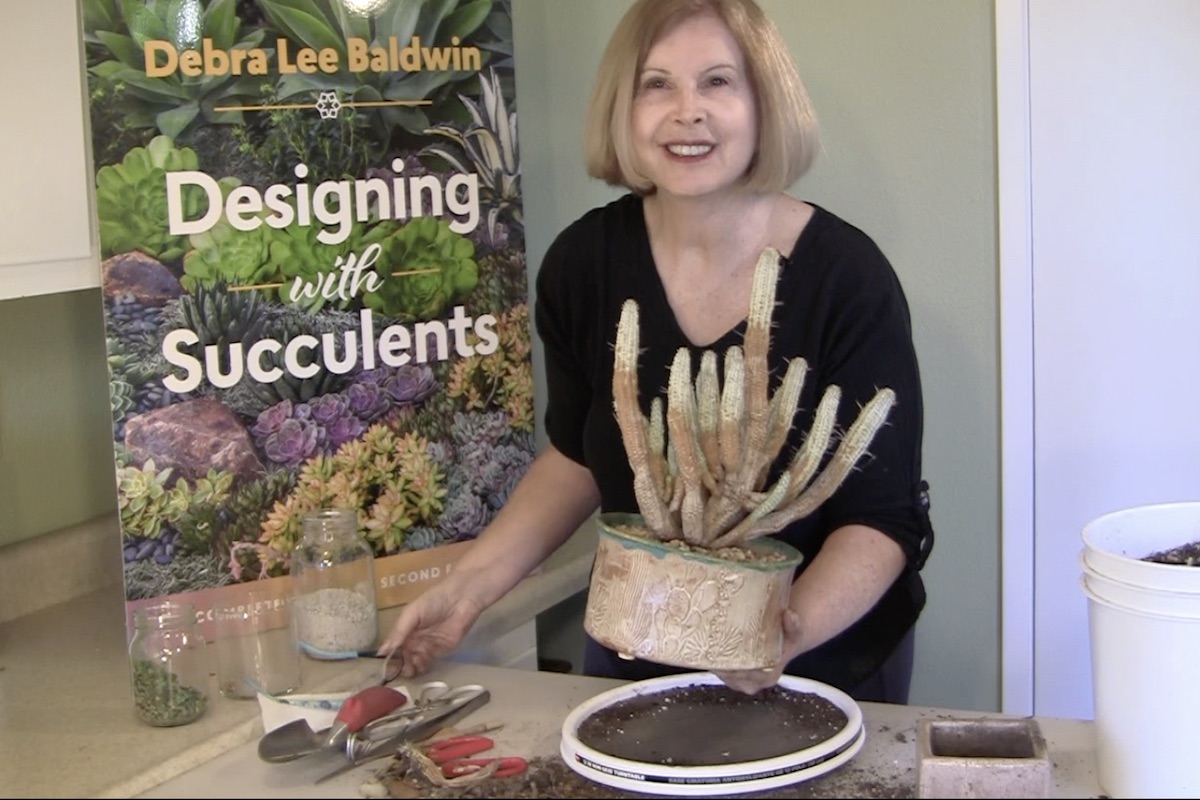
Yay! Got it repotted!
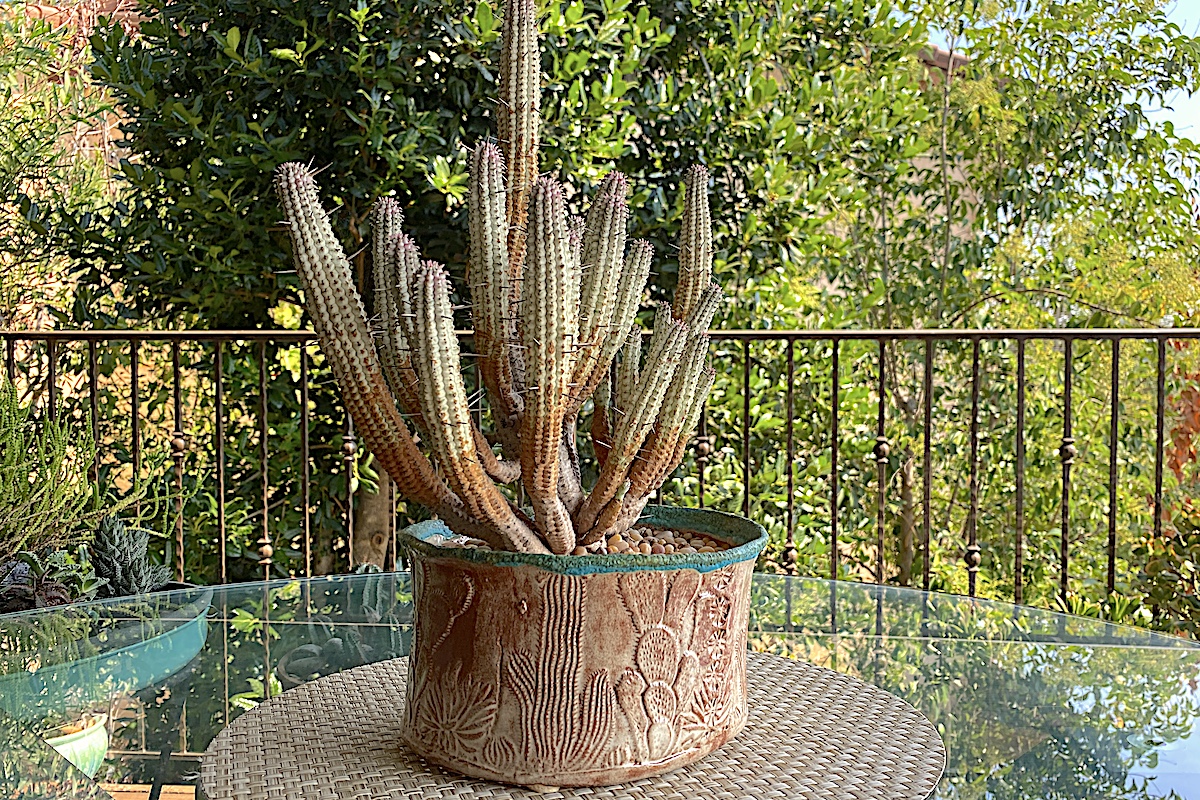
Here's the newly repotted euphorbia on my deck. I love how the pot's design repeats the texture and shape of the plant.
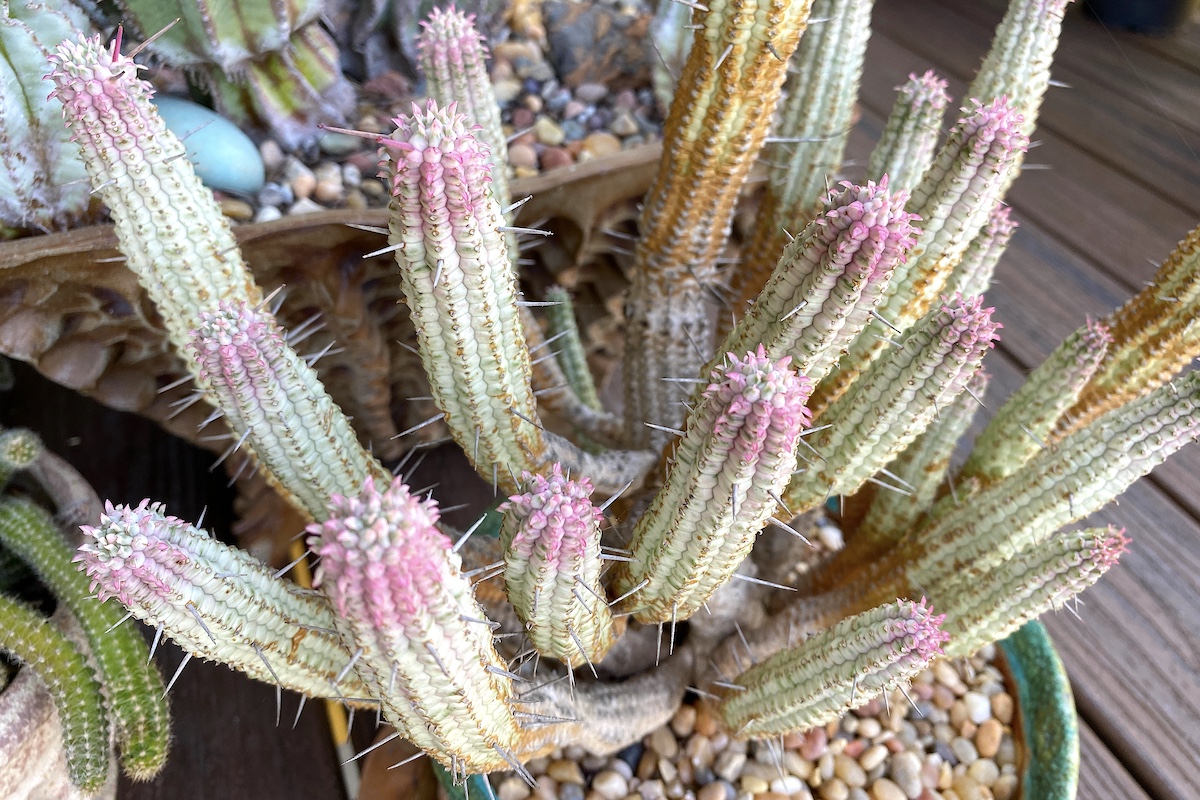
After several months in its new pot, the euphorbia's tips pinked-up beautifully.
Tools and Materials
- Pot and spiny succulent
- Potting soil
- Trowel (hand shovel)
- Long-handle tweezers
- Kitchen tongs
- Clippers
- Optional: Turntable, pebble topdressing, paper towel, cheap paintbrush, pumice
Method
Assemble tools and materials. Tidy and prune the plant. Use long-handle tweezers to remove debris from its center. Use kitchen tongs to grasp and pull the plant out of the old pot. If it won't come out, check to see if roots are growing out the pot hole. If so, snip them off. If the plant still won't come out, insert a pointed object (like a pencil, chopstick or long-handle tweezers) into the hole and push up. (In the video I use some force to do this, pounding the bottom of the tweezers on the table.)
If the root ball is still stuck, insert tweezers into the pot at an angle, push down so they grasp the root ball, and raise them---root ball and all---by using the edge of the pot for leverage.
Once plant and root ball are out of the pot, use a soft paintbrush to remove remaining bits of dirt and debris. Add enough potting soil (I amended mine 25% with pumice) to the new pot so that the crown of the plant rests about an inch lower than the rim. Add more soil as needed to cover the root ball, pressing firmly to anchor it.
Conceal soil with topdressing. I used small rounded pebbles that repeat the pot's color and pattern. Water the plant to clean it and settle its roots. Place it where you'll enjoy it and it'll receive optimal light. After several months, my corn cob euphorbia's tips had turned pink. Beautiful!
Have questions or comments? I appreciate hearing from you. Please post them in the Comments section below.
Resources
Find succulents and top dressings online at Mountain Crest Gardens
The art pot used here is by Regina Fernandez of Port Town Pottery. She sells at Cactus & Succulent Society sales throughout Southern CA. Connect with her on Facebook and Instagram.
Watch the new video: "How to Repot a Stuck Spiny Succulent" on YouTube (5:47)
Perfect Succulent Art-Pot Pairings
[av_textblock size=” font_color=” color=” av-medium-font-size=” av-small-font-size=” av-mini-font-size=” admin_preview_bg=”] Two basic design principles will help you create perfect succulent art-pot pairings. From my book, Succulent Container Gardens: “Contrast and repetition are the two most important design elements. When these are used effectively, the results are remarkable. Contrast jolts and engages; repetition comforts and soothes…Repetition hearkens back…
How to Create a Cactus Curio Box
Cacti are succulents with simple shapes, and none illustrate the plants’ elegantly elemental geometry as well as spherical varieties. To showcase the beauty of these often-ignored succulents, I went with an open wood box with a dozen partitions, each just right for cacti in 2.5-inch pots. My goal was to elevate textural, glowing orbs to the status of jewelry or artwork.
My Must-Have Garden Tools for Spiny Succulents
The tools I use when working with spiky, spiny succulents include 12-inch tweezers, kitchen tongs, artist’s brush, chopstick, scissors, metal teaspoon, inexpensive garden gloves, and duct tape.
The post How to Repot a Stuck Spiny Succulent appeared first on Debra Lee Baldwin. Copyright © Debra Lee Baldwin.
from Debra Lee Baldwin https://ift.tt/2ELvojQ
via IFTTT

